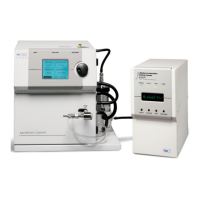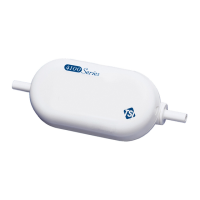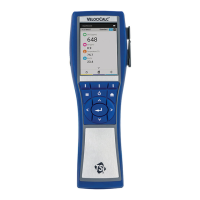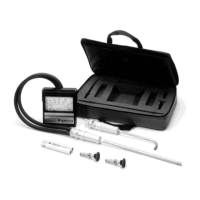B–4 Series 3080 Electrostatic Classifiers
cut-point diameter is a function of the impactor flow rate and nozzle
diameter.
Equation B-1 is used to calculate the cut-point diameter.
CQ
WStk
D
p
ρ
µπ
4
9
3
50
=
Equation B-1
where:
D
50
= particle cut-point diameter (centimeter, 50% cut efficiency)
Stk = Stokes number = 0.23
p
= particle density (g/cm
3
)
Q = volumetric flow rate (cm
3
/s)
C = Cunningham Slip Correction
= 1 + Kn [α + β exp(-γ/Kn)]
(where Kn is the Knudsen number: Kn = 2 λ/Dp)
(α = 1.142, β = 0.558, γ = 0.999)
λ
= gas mean free path
µ = gas viscosity (dyne·s/cm
2
or g/(cm·s))
W = nozzle diameter (cm)
The Stokes number is a dimensionless parameter that characterizes
impaction.
Electrostatic Classifier
The purpose of the Electrostatic Classifier is to extract a known size
fraction of submicrometer particles from the incoming polydisperse
aerosol.
In the Electrostatic Classifier, the aerosol enters a Kr-85 Bipolar
Charger (or neutralizer), which exposes the aerosol particles to high
concentrations of bipolar ions. The particles and ions undergo
frequent collisions due to the random thermal motion of the ions.
The particles quickly reach a state of charge equilibrium, in which
the particles carry a known bipolar charge distribution.
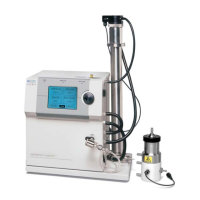
